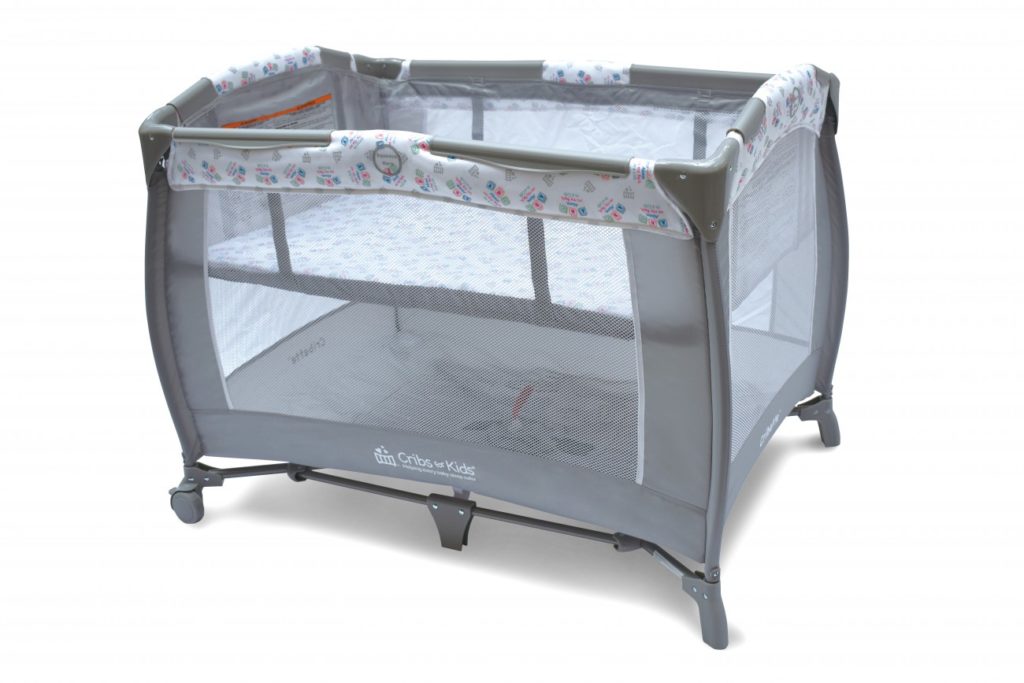FREE Pack-and-Plays Available for Eligible Families through the Health Department
|
|

The Ohio Department of Health, Bureau of Maternal, Child and Family Health partners with Cribs for Kids® and local organizations throughout Ohio to provide free pack-and-plays and safe sleep education to eligible families.
Many homes lack safe sleeping spaces for babies. Sleeping in a bed with a baby or placing a baby on a couch for sleep greatly increases their risk of a sleep-related death. Co-bedding, or sleeping with another person, accounted for more than half of all sleep-related infant deaths in Hamilton County over the past five years.
Safe Sleeping Guidelines for Infants include the following:
1) Babies should have their own sleep space. Bring a safety-approved portable crib, Pack-and-Play, or bassinet with you on your travels. Babies should never sleep with another person, to eliminate the risk of a sleeping person rolling over on them.
2. Place babies on their back every time they sleep. The risk of sleep-related death increases when infants are placed in new sleep positions (i.e. stomach or back). Infant sleep guidelines have changed in the last 30 years; it’s important to share ‘back to sleep’ messaging with older generations.
3. Don’t overheat babies. Dress your baby in a wearable sleeper or one-piece pajama, instead of using a blanket. Wearable sleepers can be layered over an undershirt or onesie.
4. Keep the baby’s room at a comfortable temperature, usually between 68° and 72°F.
5. Don’t smoke around your baby. Exposure to secondhand smoke increases the risk of Sudden Infant Death Syndrome.
Details about the FREE Pack-and-Plays
The Hamilton County Health Department hopes to increase education like this about safe sleep through their program giving away FREE pack-and-play cribs. The hope is that it will decrease the number of infant sleep-related deaths in Hamilton County.
The free cribs have all the safety features of a Pack-and-Play for babies up to 30 pounds 35 inches, and is constructed from made-to-last materials to ensure longevity. It has a compact design to be easy to transport, and effortlessly converts from a full-size bassinet to a safe sleep space for infants up to one year of age. It additionally has an educational safe sleep reminder for caregivers imprinted on the fabric that reads: “A, B, C, –Alone on my Back in a Crib”. FREE portable crib sheets and Halo Sleep Sacks are also available.
Program Qualifications
To qualify for the free crib one must be AT LEAST 32 weeks pregnant or have an infant UNDER one year of age; reside in Hamilton County; and be WIC eligible. One does not need to be signed up for WIC, just eligible for WIC. The program is available outside Hamilton County as well. You can find a list of participating counties on the Ohio Department of Health’s Cribs for Kids website.
To apply for the free crib, call (513) 564-2229, and press option 2.
Once eligibility is confirmed, arrangements will be made to pick up the pack-and-play at the Cincinnati Public Health Department, located at 3101 Burnet Avenue .
Educational materials for new families, such as Brochures, Handouts, Infographics and Videos are available in both English and Spanish, and can be found at the bottom of the Cincinnati Public Health program Infant Vitality webpage. Examples include information for moms on how to provide a baby with safe sleep while breastfeeding as well as resources for dads .
Cradle Cincinnati is another organization that provides resources for moms, moms-to-be and their family and friends. Through a coalition of community partners, they provide services, supplies, and education, including a community resource guide for pregnant women in Hamilton County.
You can find more resources related to child development and financial assistance by selecting the “child development” and/or “financial resources” option from the dropdown tab on our Social Service “Utilization Library” page.
The format and content of this post has been edited to fit guidelines of the Cincinnati Branch of United Resource Connection for this rebroadcast. The original post can be viewed on the Hamilton County Public Health website.



